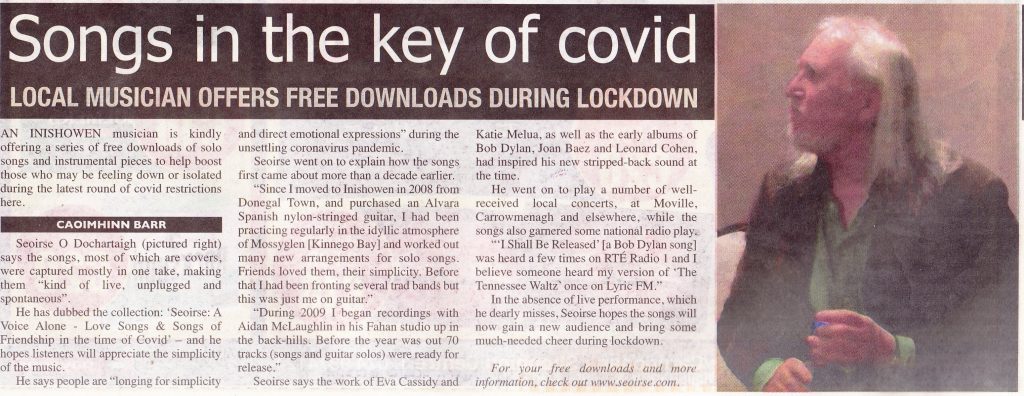VOLS 1 & 2 NOW AVAILABLE!
The Heart’s a Wonder Vol. 2
This album completes my musical journey through some of my favourite songs in Irish and English – indeed, even in French. I have been singing some of them for a few years now but only got round to recording them in 2024. A most enjoyable experience.
I hope you enjoy the selection!
For purchases click on “SHOP” and select CD, Single MP3s or full album MP3s.
Tracks:
An Soilcí agus An Mhaighdean Mhara; True Colours; Báighe Inis Fraoich; Turas go Tír na nÓg; As I Roved Out; When I Fall in Love; The Maid of Culmore; Experience; Cold Blows the Wind; The Munster Cloak; My Lagan Love; An Bonnán Buí; Do Bhí Bean Uasal / Carrickfergus; Eibhlín a Rúin (Co. Clare version)
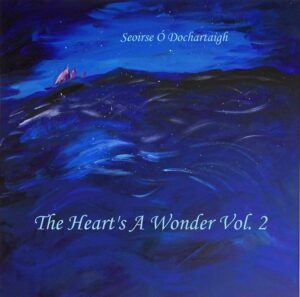
The Heart’s a Wonder Vol. 1
Tracks:
The Woods of Ballyarr; Hickory Wind; Just Like Heaven; Hey, That’s No Way to Say Goodbye; I Think of You; Perfect Day; Is Fada Liom Uaim Í; An Ghiobóg; Dream a Little Dream of Me; Mo Chuisle; God Only Knows; What a Wonderful World; An Fhalaingín Mhuimhneach; Black Jack Davie; Le Feuilles Mortes; Ciorcal Rónáin.
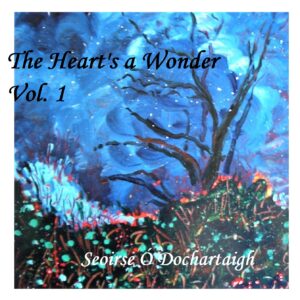
https://vimeo.com/manage/videos/789844426
VIDEO CLIP: Seoirse agus Dúlamán sa tSíbín (TG4) ▲ https://vimeo.com/789844426
Edited version of Seachrán Chearbhaill (above) Full audio version below
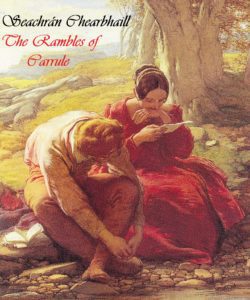
Seachrán Chearbhaill
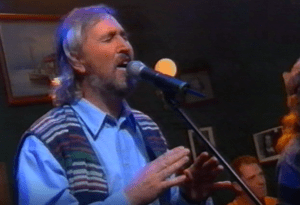
Seoirse sa tSíbín
Agus lá breá dá ndeacha mise a’ breathnú ar an spéirbhean bhreá,
Mar b’shiúid í ainnirín na malaí ‘gus na ngealchrobh lámh…
And one fine day I went to gaze upon the dream lady
Because there’s a damsel with a fine brow and pale hands…
Seachrán Chearbhaill Revisited
It is nearly 20 years since I recorded my own take on this fascinating song/story. Many purists will no doubt cringe at my attempt here to provide accompaniment to Joe Éinniú’s unaccompanied tour de force, Seachrán Chearbhaill, The Rambles of Carrule. No-one has attempted accompaniment before or since, as far as I know, and very few sean-nós singers have since taken up the challenge to sing it. I know of only two: Seosamh Ó Clochartaigh and Peadar Ó Ceannabháin but the latter’s text is based on a version collected at the turn of the nineteenth century by Mícheál and Tomás Ó Máille. What I take from this is that Joe Éinniú’s version has been subject to many changes through continuous transmission over several generations. It’s his version that I’ve learned and it was from a 1963 Gael-Linn EP rather than from the album version of 1976.
Seán Mac Réamoinn wrote in 1976:
“…nach bhféadfadh éinne seachas amhránaí fíorchumasach é a chanadh ar chor ar bith.” (…no-one but a truly capable singer can sing it anyway.)
I am not claiming to be a “truly capable singer”! But I have learned the song and recorded it and sung it in dozens of art centres and theatres all over Ireland and Scotland with my ensemble, including a well-attended concert in the O’Reilly Hall in UCD in 1999. I also sang it live one evening on TG4. I can sing it unaccompanied too but prefer to do it with accompaniment.
It’s is my own arrangement, my own concept. The sound engineer, Steáfán Hannigan, had his own ideas about how the song should sound. He was the percussionist and his input was significant. However, he went for ambience rather than clean melody lines. Had I extended studio time, I would have recorded it differently with tighter vocals and more precise percussion. In some ways, Steáfán’s mix sounds like a demo to some ears but knowing his other work in London with jazz musicians I am sure that the ambient aspect of Seachrán Chearbhaill was foremost on his mind. In the final analysis, I am pleased with the recording. I had worked on ideas for it for years beforehand, including a demo made in a basement home-studio in Cologne in the mid-1990s. (I won’t assault the ears of listeners with that cacophony!).
So here it is: the Steáfán mix and the live TG4 performance which the producer insisted upon editing down. It was always great fun to perform it, especially when there was no-one around saying it was too long. (It’s actually only 4 mins 35 seconds long in the unexpurgated version.) I would love to revisit the recording studio and do it all again, taking my time with the process and, perhaps, doing fuller justice to the great Joe Éinniú’s special gift to us all.
I wonder still if Seachrán Chearbhaill is really Ireland’s oldest song?
[SCROLL DOWN FOR TRANSLATION]
SEACHRÁN CHEARBHAILL
Agus lá breá dá ndeacha mise a’ breathnú ar an spéirbhean bhreá, Mar b’shiúid í ainnirín na malaí ‘gus na ngealchrobh lámh. Bhí a grua mar an balla le go mbreactar air an aol mar bhláth, Is a seang-mhalaí searca a nglaoitear ar an aol-tsúil bhreá.
Ó bhí siúd aici, deir Peadar más (a) fíor le rá Ó rós-bhéilín tanaí le caiseal agus toinnbhéal tláth Bhí pingin insan mhaide aici ‘s dhá leith-phinghin eile anuas ar a’ chlár, Ní raibh fáil aici ar an chluiche údan ó mhaidin nó go n-éiríodh an lá.
Muise, an gcluineann sibhse mise libh, a chailíní na sráide údan thiar A’ bhfuil mé i ngean oraibh le fada is mé faoi ghrásta Dé? Tabhair an scéala uaim chuici agus aithris dí nach taobh léi atáim Mar go bhfuil sin bean eile le fada a’ mo chloí le grá.
A’ bhfuil lán doirne domhaine ins gach buinne dá dlaoi-fholt bhreá Nó an bhfuil siad ina gcodladh mar is mithid daoibh m’úrscéal a fháil.
Caint:
Dár seo ‘gus dár siúd – is é an t-úrscéal a bhí ansiúd ná triúr bodachaí i dtús Earraigh a chuaigh ar thóir mónadh, iad fhéin agus an dá mhadaí con a bhí acu. .Chuaigh siad ag iarraidh cead coilleadh ar a’ Choirbíneach agus thug sé sin daofa. Chroch siad leofa a bpéire tuannaí cúl-ramhra béal-tanaí. Dhearmad siad a ‘tapaidh ach thugadar a’ mí-thapaidh leo. Bhriseadar na giarsaí ach lig siad na maidí rámha leis a ‘tsruth.
Muise ar arraingeacha eagailte domh-sa nó pianta báis, Mar atá mé ‘a mo stancadh ag an arraing ‘tá dhul fríd mo lár Ó b’fhearr liom seal fada ‘bheith ag breathnú ar a’ mín-chnis bhreá Is dá bréagadh go maidin cé go mb’aor sin domh a leithéid a rá.
Caint:
Dár seo ‘gus dár siúd – is é an t-úrscéal a bhí ansiúd ná Cormaic Mac Airt mac Choinn Mac Thréanmhór uí Bhaoiscne a chuaigh ag tomhais na léime ag binne brice bua a bhí i mBinn Éadain Mhic Céadta Mhic Amhalghaidh, an áit a dtáinig an chéad loing is an céad laoch go hÉirinn ariamh.
Órú dheamhan sin gort socair nach i bhfogus dó ‘tá nóinín fraoigh Agus dheamhan sin loch ar bith gan abhainn ‘bheith ‘gabháil uaithi síos. Tá an reithe seo ar sodair agus níl aon chónaí faoi. Is ní minic a tháinig sonas gan an donas ‘bheith in orlaí fríd.
Caint:
Dár seo ‘gus dár siúd – is é an t-úrscéal a bhí ansiúd ná reithe mór mo mháthar mór a chuaigh siar sa teampall ag réabadh amach “déascannaí”. Mara dtige siad roimhe reithe mór mo mháthar mór déanfaidh sé an diabhal sa teampall mhór.
Má théann tú thart siar chuig an tsean-bheainín bhéasach A bhfuil aici scata de pháistí bréagach’ Cuimil do bhosa go sleamhain dá n-éadain Fainic an lochtofá tada dá dtréartha Is an waigéaró wéaro, is í an chraoibhín gheal donn.
Má théann tú thart siar ‘nsin in ascal a’ tomáin Fainic tú féin ar eas údan Shiobháin Báthadh dhá chaora inti minseach is mionnán Capall Uí Dhomhnaill a chú is a ghearrán Is an waigéaró wéaró, is í an chraoibhín gheal donn.
Translation by Seoirse Ó Dochartaigh
And one fine day I went to gaze upon the dream lady Because there’s a damsel with a fine brow and pale hands. Her cheeks a lime-coloured sheen against a whitewashed wall And her loving narrow brows which could beckon you with a fine lime-tinted eye.
O she had that, says Peadar, it’s true to say From her rose-petal lips to her rows of teeth like the tender crest of a wave. She had a penny on her trick-stick and two other halfpennies on the table. She had no chance with that trick from morning to the rising day.
Indeed, do you hear me, girls of yonder street? That I am fond of ye for as long as I am with the grace of God. Bring a message to her and tell her that siding with her I am not Because it’s that other woman who has me tortured for such a long time.
There is a full, deep handful in every wave of her fine flowing locks… Or are they all asleep because you must get my story?
Spoken:
By this and by that…the story was that three lads at the beginning of spring went out in search of turf – themselves and the two hounds they had. They went seeking permission of the wood from the Carbin and he gave that to them. They carried off with them their pair of broad-backed, sharp-edged axes. They forgot swiftness but had the sluggishness with them. They broke the beams but they let the oars drift with the current.
Indeed, the fearful arrows for me, or the pangs of death As I am beleaguered by the arrow going through my breast. I would much prefer for a long spell to be gazing on her beautiful, smooth, fine skin And coaxing her until morning although it’s ironic for me to say the likes of that.
Spoken:
By this and by that… the story was that Cormac Mac Airt, son of Conn, son of Tréanmhór, grandson of Baoiscne went measuring the jumps at the speckled solid peaks that were on the Hill of Éatán, son of Céadta, son of Amhalghaidh, the place where came the first ever ship and the first ever warrior to Ireland.
Oh, the devil a quiet field there is that doesn’t have near it a heathery daisy; Oh, the devil a lake there is that doesn’t have a river flowing down from it; This ram is galloping and has no dwelling place to shelter under. It’s seldom that happiness came without unhappiness interspersed through it.
Spoken:
By this and by that…the story was that a big ram belonging to my grandmother went over to the church ripping out desks. Unless they come before my grandmother’s big ram, he will cause total havoc in the big church.
If you go over there then to the little mannerly woman Who has a crowd of untruthful children, Rub your palms sleekly on their foreheads. Be careful that you would not fault any of their qualities And the waggero wero she’s the bright brown little branch.
If you go over there (then) in the hollow of the small tuft Be careful yourself of Siobhán’s waterfall Two sheep were drowned in it, a nanny goat and a kid, O’Donnell’s horse, his hound and his mare, And the waggero wero she’s the bright brown little branch.
Cearbhall Ó Dálaigh (fl.1590 -1630) and Eibhlín a Rúin
Eibhlín a Rúin: Irish title for a well-known love ballad that may date from the 14th century but is usually ascribed to Cearbhall Ó Dálaigh (fl. 1590–1630) in honour of Eibhlín Chaomhánach, the daughter of a nearby chief; usually titled ‘Eileen Aroon’ in English. The name Eibhlín entered Ireland with the Normans (12th cent.). [Oxford Reference]
The stories behind the songs “Eibhlín a Rúin” and “Seachrán Chearbhaill” are a mixture of historical fact and folklore. The disenfranchising of the poets, bards and harpers of Ireland in the early1600s is totally factual. They formerly held positions of authority in the castles and big houses of the aristocracy, which included the Gaelic-speaking Anglo-Normans. When that ended, they took to the roads. Cearbhall Ó Dálaigh (fl.1590 -1630) was one such poet / harper. Some say he was from Connacht but historian An tAth. Séamus de Val, of Bunclody, Co. Wexford, claims that this particular branch of the Ó Dálaigh was from the townland of Pallas, north of Gorey town, Wexford.
Cearbhall took odd jobs, working as farm labourer and unskilled assistant, wherever he could find the work. One day, while working for a farmer, he had a strange mystical experience. While minding the farmer’s three cows, a rock opened up and a large black bull appeared. The farmer had asked Cearbhall to let him know when the white cow was calving (there were two black ones and one white one) because anyone drinking its milk, he said, would have the gift of all knowledge. When the new-born calf was sucking, some of the milk splashed on to Cearbhall’s lips by accident. A voice then told him he now had the gift of all knowledge and that his life was in mortal danger because the farmer would surely kill him.
He wandered off again and weeks later he called into a cobbler’s shop to look for employment. The cobbler was extremely busy making a pair of shoes for the lady of the big house, but he told Cearbhall to take a seat and that they would have a chat later. The cobbler fell asleep and Cearbhall thought he’d finish the shoes for the cobbler. When he woke up, the cobbler was furious saying that he could not now deliver the shoes to the lady, that Cearbhall would have to do so. He said she would not like the idea of another cobbler making her shoes.
The lady in question was Eibhlín Chaomhánach, the daughter of the nearby Kavanagh chieftain of Clonmullin Castle in the parish of Clonegal / Barragh. Eibhlín opened the door and Cearbhall fell instantly in love with her – love at first sight. When she tried on the shoes, only one of them fitted perfectly – the one Cearbhall had made. “Whoever made this shoe will follow me to the ends of the earth!” she said.
So, Eibhlín Chaomhánach became the subject of Cearbhall Ó Dálaigh’s most famous song “Eibhlín a Rúin” (Eileen Aroon).
I recorded this song, Eibhlín a Rúin, in 2024. It is not the well-known version but a more elaborate one (musically) which was collected in Co. Clare. Below is the text and translation:
Do chaith mé féin mo bhróga leat, Eibhlín a Rúin
Do chaith mé féin mo bhróga leat, Eibhlín a Rúin
Do chaith mé féin mo bhróga leat
Do ghearr síos na sála leat
Mar i ndúil is go mbeinn-se pósta leat, Eibhlín a Rúin
Do sheolfainn féin na gamhna leat, Eibhlín a Rúin
Do sheolfainn féin na gamhna leat, Eibhlín a Rúin
Do sheolfainn féin na gamhna leat
Agus síos go Tír Amhlaí leat
Mar i ndúil is go mbeinn i gcleamhnas leat, Eibhlín a Rúin
I wore out my shoes because of you, Eileen, my love true
I wore out my shoes because of you, Eileen, my love true
I wore out my shoes because of you,
Wore down the heels because of you,
In hope that I would marry you, Eileen, my love true
I’d drive the calves because of you, Eileen, my love true
I’d drive the calves because of you, Eileen, my love true
I’d drive the calves because of you,
Down to Tirawley because of you,
In hope that I would marry you, Eileen, my love true
Cearbhall’s other song, “Seachrán Chearbhaill”, has been obfuscated by various tellings in the folk tradition. No real historical facts have emerged to substantiate the story but the poem/song has survived to this day and is still sung in Connemara – after 400 years or more. While Cearbhall, now betrothed to Eibhlín, was still travelling far from home in search of work, her parents convinced her that Cearbhall already had a wife. They then arranged for her to be married to another man.
A marriage feast was planned and Cearbhall, somehow, heard about it and decided to attend. (Some accounts say he went dressed as a beggar; others say he was disguised as a gleeman or a harper.) All of the wedding guests, of course, thought Cearbhall was speaking and singing gibberish that day when in fact he was communicating with Eibhlín in the song and asking her to elope with him, suggesting certain meeting places and hiding places. Hence the significance of the “ramblings”. As the guests got merrier, Eibhlín and Cearbhall slipped out the castle door to their pre-arranged rendezvous.
Eibhlín’s father was, naturally, angry and upset by this turn of events and he took to his bed. But he sickened so badly that an all-out effort was made to find them. The couple eventually heard the news of the father’s illness and returned voluntarily. Cearbhall, using the power and persuasion of the poet, and maybe even a little harp music, cured the man. An Caomhánach forgave them both and allowed them to marry with his blessing.
According to historian An tAth. Séamus de Val, the Caomhánaigh (Kavanaghs) were evicted from Clonmullin Castle and ended their days in France. If Ó Dálaigh was a member of the extended family, perhaps he too died in France along with his beloved “Eibhlín a Rúin”.
Inishowen Independent 20th Oct 2020
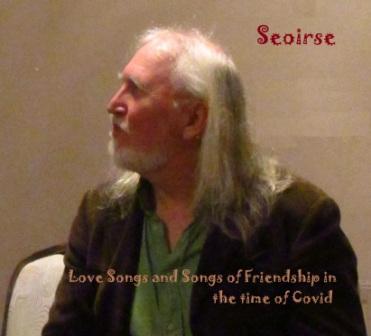
Seoirse: A Voice Alone
Love Songs & Songs of Friendship in the Time of Covid
DOWNLOAD OR LISTEN FREE 30 songs over the next few weeks of Oct 20
“I play an Alvaro Spanish-made nylon-stringed guitar and compose link pieces that intricately intertwine with the songs aiming always for warmth and careful pacing.
I try to present music-making as a passionate dance between voice, fingers and strings. When I sing the old songs of Inishowen, and tell her stories, I endeavour to carry the listener with me, magically and gently, note over note, evoking the past and re-living the thoughts and feelings of our ancestors. I sense a rich stillness in these re-tellings, like the stillness often found in the depths of a hidden mountain lake…”
Seoirse’s speciality is Gaelic song, poetry & story prefaced by synopses and translations in English if required. The songs are rendered simply through the pure acoustic essentials of voice and nylon-stringed guitar, the accompaniment aimed at sounding harp-like at times.
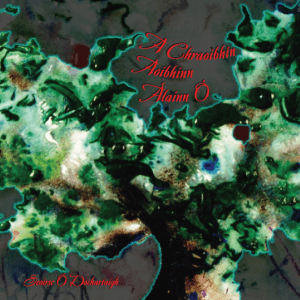
This is a new compilation just released (May 2019) of songs learned in Ranafast (see shop)
Seoirse learned most of his songs and stories in Rann na Feirste in the West Donegal Gaeltacht while teaching in Coláiste Bhríde. He won several music prizes over the years, including the Ulster Fleadh (1st in Singing in Irish in 1975) as well as numerous Oireachtas prizes for arrangements. However, he didn’t return to competitive singing until 2013 when he won 1st prize at the Pan Celtic Festival in Carlow and went on to represent Ireland later that year. He has recorded seven studio albums of songs, stories and instrumental solos and has archived hundreds of other pieces most of which are available to the public through his web-site. Since his move to Inishowen in 2008 he has accumulated a number of local songs and stories dating from Inishowen’s Irish-speaking past and has even set some of the legends to music.
“…we are transported across time and borders by a fluid style which seamlessly and coherently interweaves classical, Gaelic and American folk elements. In Seoirse’s skilled hands, music and stories resonate with a fresh and tender intimacy… the delicate yet vibrant presence of a private performance by a warm hearth…” Kathryn Daily
“Wow!!! a cover of “Windmills of the Mind”, which is surprisingly effective as Seoirse (pronounced SHOR-sha) manages to infuse some classic folk moves with creative interpretations. I generally sense a vibe similar to that of Tír na nÓg and at times Magna Carta, with plenty of individuality here. And there are some adventurous arrangements in some songs, which is helpful as there are a lot of covers here… Leonard Cohen, Bob Dylan, Bob Seger, etc. This is a double LP on one CD with eighteen songs and there are several traditionally arranged classics as well… Like Tír na nÓg, there is an Irish feeling here that does not dominate the songs but stays in the mix…” David Hintz
Seoirse’s music is available on CD in the Shop
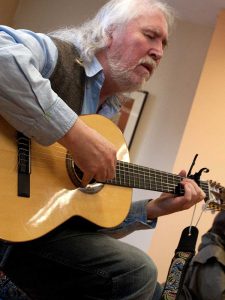 Recent Performances
Recent Performances
Centre Culturel Irlandaise, Paris
The Millennium Forum, Derry (later televised on TG4)
Regional Cultural Centre, Letterkenny (“An Piarsach” le Noel Ó Gallchóir – amhráin agus scéaltaí)
The Sugar Club, Dublin (later broadcast on RTÉ 1)
Gerstock, Moville / Moville Library
TG 4, Raidió na Gaeltachta (various appearances)
Gaelscoil Cois Feabhail
The Black Box, Belfast
Carrowmenagh Community Hall
Teachers Centre, Parnell Square, Dublin
“Dúshlán” RTÉ Television
Cultúrlann Mhac Adam-Ó Fiaich, Béal Feirste
McCracken Summer School, Belfast
Dánlann Uí Shearcaigh, Gort a’ Choirce.
Live Concert Recordings
Four live concerts, three of these originally issued on cassette, are now available as MP3 Downloads at www.threadsofsound.net
Seoirse & Peadar Live in the Cellar Club Errigal SCD 010 [1987] Irish Trad.
Péire Stróicthe Errigal SCD 011 [1989] Acoustic Pop & Folk
Amhráin agus Bodhráin (with Damien Quinn) Errigal SCD 012 [1993] Irish Folk/Gaelic
Amhráin agus Bodhráin
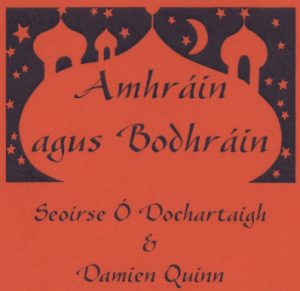
“This live concert is superbly recorded, incisive and full-bodied. Here are unusual performances of Irish songs in which virtuosity goes with a sense of spontaneity. The rhythms in the fast songs (and its nearly all fast songs here) are freely and infectiously sprung to bring out high spirit and individuality. The sound is bright and clear too, giving extra bite to the performances. Damien Quinn accompanies Seoirse sensitively, when required, and vigorously with off-beat rhythms sharply pressed home. The playing and singing are exhilarating and full of many unexpected changes of tempo, but expertly controlled. The thrust of the bodhrán passages in the opening song possesses a lively wit that never once looses impetus. Seoirse’s colourful, winning performances are totally idiomatic, bringing out point and spark in every track with great warmth and naturalness of voice and exciting guitar bravura throughout.” – Oisín Ó Gallchóir
The fourth was only released as recent as 2015 on CD:
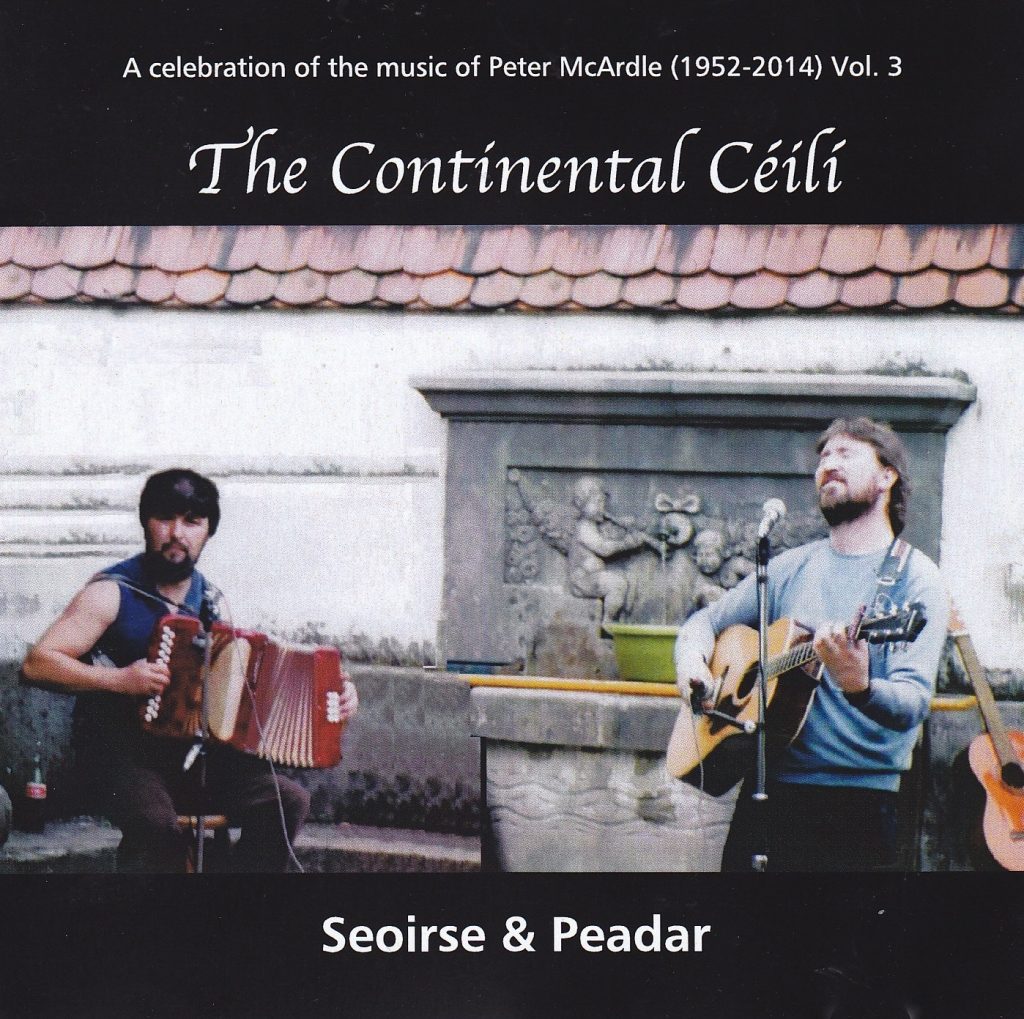
Seoirse & Peadar The Continental Céilí Errigal SCD 026 [1989 / 2015] Irish Trad.
This aptly-named collection is a live recording from the last gig Peadar and I did in Co. Donegal, August 1989. It was in the tavern of Frenchwoman, Dominique Grasset, in Dunkineely, and I remember well the clientele: Peter and Lynn Petrie from Detroit (at that time living in Mountcharles); a few local girls out for the night; a group of eager American students on their way to, or from, the Irish language school at Oideas Gael in Glencolmbkille. The atmosphere was like that of a folk-club, such was the reverence for the music – to say nothing of the warm response and the clapping and whooping. The American students told me afterwards that they had been in some really dire session before they dropped into Dominique’s for a quick bar meal and were amazed at the quality of Peadar’s playing and decided to stay. One of them, a musician himself, said that Peadar played like a true champion when he performed straight traditional tunes (a champion he certainly was), but he thought that he was magnificent when he “broke all the rules”. He re-christened him “The Jimmy Hendrix of the button accordion”.
Peadar never rehearsed. It was impossible to sit him down with a new idea or a new tune and get him to practise it. On our way to the gig I told him that I had a special tune for him to play as a link-piece for the song “Go, Move, Shift”. I hummed it. He just puffed on his cigar and said nothing. As we were setting up the PA for the evening, I hummed it again and said “D minor – is that key okay?” Then the gig started and without mentioning the tune he launched straight into it when the song came up on the set-list. As it progressed, he embellished it. He also listened to my guitar riff and imitated that too. We had never done that song before as a duo. It was so spontaneous. Peadar’s musicality was supreme.
Keys are always a problem with box-players when they perform with singers like me who prefer the keys of F-sharp, E-flat and B-flat to the standard keys of D, G and A. On one occasion I forgot to put my capo on for a song that was meant to be in D and Peadar came in, as usual, with his blistering reel in between each verse. It sounded great. Afterwards he said: “That one threw me! I had to play that reel in C …and do entirely new fingering…and remember to put in all the ornaments.” “Sorry!” I said, “but it sounded fine to me.” He said “Try standing on your head, drink a pint o’ Guinness and play the Mason’s Apron at the same time!” “Well, you just did it, Peadar!” We laughed our heads off.
I have such warm memories of that evening. And every time I listen to this recording I’m back there in Dominique’s with him by my side. I can even smell his cigar! Seoirse
